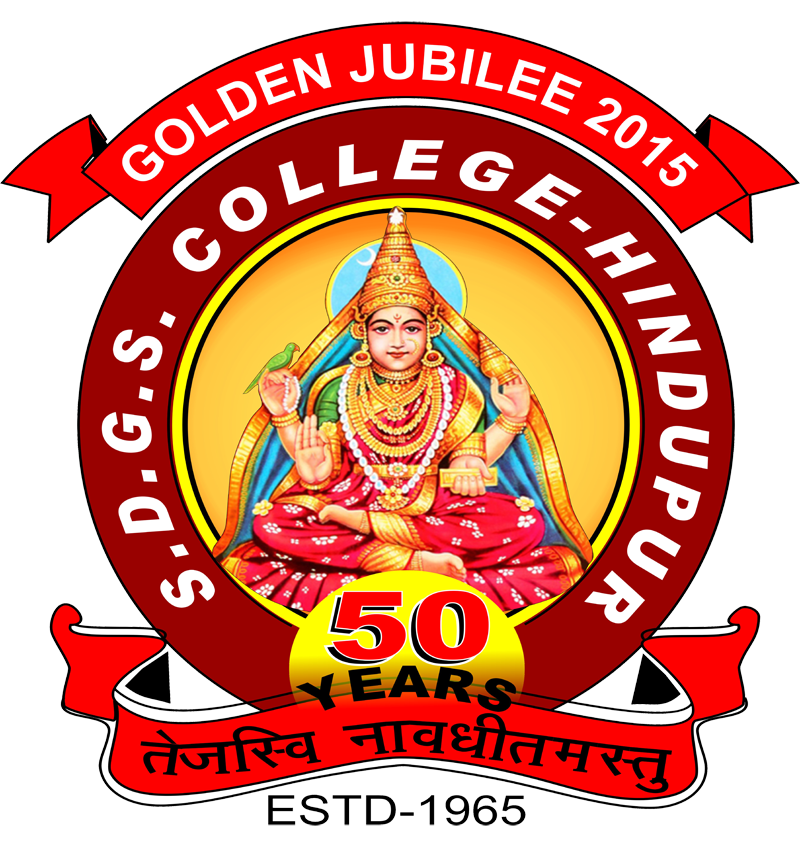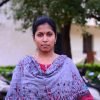
About department
The Department of Computer Science and Applications was established in the year 1998 as an institution offering undergraduate courses in Computer Science and Applications. The Department of Computer Science and Applications offering 5 undergraduate courses .
. Department of Computer Science and Applications has MOUs with other degree colleges in the town. The Department comprises of 4 Computer Laboratories with 150 systems, state of the art computing facilities with sufficient power supply backup.
Department of Computer Science & Applications is functioning together with Mathematics, Physics, Statistics, Electronics and Commerce
Year of establishment : 1988
Teachers who served this department are
| S.No | Name of the Faculty | Qualification |
| 01 | Dr B Nagabhushan Rao | M.Sc(CS), M.Sc(PHY),MBA, P.hd |
| 02 | Sri G Gururaja Rao | M.Sc.,MCA |
| 03 | Sri S Shiva Shankar | M.Sc(CS) |
| 04 | Sri M Pratibha | MCA |
| 05 | Sri B Manjunath | M.Sc(CS) |
| 06 | Sri Vijay Krishna Reddy | MCA |
| 07 | Sri S Harish | MCA |
| 08 | Sri V Jitendra | M.Sc(CS) |
| 09 | Sri B Manjula | M.Sc(CS) |
| 10 | Sri Malik Basha | MTech |
| 11 | Sri G Chakrapani | MTech |
| 12 | Sri B Sunil | M.Sc(CS) |
The following the teachers are presently working
| S.No | Name of the Faculty | Designation | Qualification | Specialization | No of Years of Experience |
| 01 | Sri.G.Jeelan Basha | Asst. Professor | M.Sc(CS)
MCA |
DBMS | 18 |
| 02 | Sri P Eswarappa | Asst. Professor | M.Sc(CS) | C Programming | 13 |
| 03 | Smt K Krishna Kumari | Asst. Professor | M.Sc(CS) | Web technology | 10 |
| 02 | Kum. Chandramma | Asst. Professor | M.Sc(CS) | Software Engineering | 05 |
| 03 | Kum.B Bhavitha | Asst. Professor | MCA | Java | 01 |
No. of Technical Staff:- 01
Courses offered: – BSC MPCS/MSCS/MECS BCOM(CA)
BSc Computer Science (B.Sc CS)
PROGRAMME SPECIFIC OUTCOMES(PSO) COMPUTERS SPECIALISATION
- Studies the principles and use of computers
- one of the most popular programs in the IT domain. This field has the potential to propel your career.
- It is a consistently growing field with a large variety of job opportunities both in India and abroad as the industry and demand grows.
- This degree can lead you to profiles like computer scientist or an information systems manager or a networking specialist whose job is to draw the technological roadmap for the organisation, ensure efficient management of the available computer facilities, handle smooth functioning of the local area and wide area networking, implement cyber security systems, look after software and hardware system upgrading, and manage system designing and technical analysis for the organisation.
- Specifically designed for aspirants looking for a career in computers. The course covers all aspects of computers right from the basic fundamentals of computers to database systems & advanced courses like C++, Java etc.
- Papers are based on mathematical and theoretical foundations of computing
BSC COMPUTER SCIENCE
PROGRAMME OUTCOMES(PO)
- The course is especially meant for students looking for a career in computers.
- Candidates who love to fiddle with computers and who like to have an in-depth study of all aspects of a computer and computing are the suitable ones to pursue this course.
- Students have common knowledge about computer and other related searching things on the net.
- This degree is required in order to work in the field of software development.
On the successful completion of the program, one can start working as:
- Systems analyst
- Information technology manager
- Software programmer
- Network programmer
- Cyber Security Manager
- Computer Graphics
- Database manager
BCOM (CA)
PROGRAMME SPECIFIC OUTCOMES(PSO) COMPUTERS SPECIALISATION
- Ideal students of the course would possess the following skills:
- Interest in and aptitude for technology, Mathematics, and Science.
- Familiarity with programming and computer hardware/software.
- Competent knowledge of core electrical and computer subjects such as electronics, electrical systems, computers, circuits, design, and modelling.
- Gains the knowledge of computers and commerce
- Studies the computers and commerce papers
- Select the field of computers and commerce
- Studies the principles and use of computers
- one of the most popular programs in the IT domain. This field has the potential to propel your career.
- It is a consistently growing field with a large variety of job opportunities both in India and abroad as the industry and demand grows.
BCOM (CA)
PROGRAMME OUTCOMES(PO)
- Designed to impart advanced learning to students in the discipline of Commerce, particularly involving the application of software technology for professional requirements, merging the academic specialties of Commerce and Computer Applications.
- This is a specialized degree that offers students expert knowledge in the area, and prepare them for lucrative employment as Commerce Specialists, Managers, Accountant, etc. the course aims to produce qualified and trained personnel for fields such as banking, insurance, accounting, stock markets, e-commerce, and marketing, besides teaching jobs in universities and colleges.
- The course is especially meant for students looking for a career in computers and commerce.
- Candidates who love to fiddle with computers and commerce who like to have an in-depth study of all aspects of a computer, commerce and computing are the suitable ones to pursue this course.
- Students have common knowledge about computer, commerce and other related searching things on the net.
CLASS :: BSC CS SEM:: I SUBJECT: FIT & PHOTOSHOP PAPER CODE:: S1-
- Photoshop is an image editingtool, not a design
- To create original images, Adobe provides other specialist programs such as Adobe Illustrator and Adobe Image Ready.
- Tasks include treating and manipulation, compositing, converting to different formats, printing, etc.
- Photoshop is very strong in the world of printed media and is popular with newspapers and other publishers.
- Photoshop is so feature-rich that it does take a while to learn all the ins and outs.
- Software that is extensively used for raster image editing, graphic design and digital art.
- It makes use of layering to allow for depth and flexibility in the design and editing process, as well as provide powerful editing tools, that when combined, are capable of just about anything.
- There are tools for making selections, for cropping an image, for editing and retouching, and many more.
CLASS :: BSC CS SEM:: II SUBJECT: C Programming PAPER CODE:: S2-
- This language is used for develop system software and Operating System.
- All other programming languages were derived directly or indirectly from C programming concepts.
- Appreciate the importance of C as a programming language .
- Learn the preferred practices in writing a program
- .Learn the desirable characteristics of a good program.
- C is a highly portable language.
- C is a highly structured language and C programs are written as collection of modules or functions.
- C has a well-defined syntax or set of rules.
CLASS :: BSC CS SEM:: III SUBJECT: JAVA PAPER CODE:: S3-361
- Java is a programming language and computing platform .
- Java is a programming language built for the age of the Internet.
- There are lots of applications and websites that will not work unless you have Java installed, and more are created every day.
- From laptops to datacenters, game consoles to scientific supercomputers, cell phones to the Internet, Java is everywhere!
- Object oriented, yet it’s still dead simple.
- Portable across multiple platforms..
- Interactive graphical applications have high performance
- Applications are secure, even though they’re downloading code from all over the Internet.
- There are many devices where java is currently used. Some of them are as follows:
- Desktop Applications
- Web Applications
- Mobile
- Embedded System
- Robotics
- Games etc.
CLASS :: BSC CS SEM:: IV SUBJECT: JAVA WITH DS PAPER CODE:: S4-361
- The data structures provided by the Java utility package are very powerful and perform a wide range of functions.
- These data structures consist of interfaces and classes.
- Stack is a linear data structure which follows a particular order in which the operations are performed. The order may be LIFO(Last In First Out) or FILO(First In Last Out).
- Example where Trees are useful is storing heirarchical objects like JavaScript Document Object Model considers HTML page as a tree with nesting of tags as parent child relations.
- A Queue is a linear structure which follows a particular order in which the operations are performed. The order is First In First Out (FIFO).
- Example where Trees are useful is storing heirarchical objects like JavaScript Document Object Model considers HTML page as a tree with nesting of tags as parent child relations.
- The most common example of the graph is to find shortest path in any network. Used in google maps or bing.
CLASS :: BSC CS SEM:: V SUBJECT: DBMS PAPER CODE:: S5-
- Banks uses database for customer accounts, loans and other transactions.
- Schools, colleges and universities use database for course details ,registration, examination details ,result etc.
- It uses online databases for buying and selling of products, online transaction processing, internet marketing etc.
- Controlling Data Redundancy
- Data Sharing
- Cost of Data Conversion
- It reduces complex relationships between data.
- Enforces user defined rules and ensures data sharing.
- It has automatic backup and recovery procedures.
- Controls data redundancy and control over security.
CLASS :: BSC CS SEM:: V SUBJECT: SOFTWARE ENGINEERING PAPER CODE:: S5-
- Stakeholders are the people or organizations interested in the outcome of a software project.
- The customercommissions the system. The developer builds the system. The users use the system.
- The specification is a document that describes the behavior of the software system to be built.
- It contains the requirements model and the domain model. The requirements model includes functional requirements (capabilities) and non-functional requirements (constraints).
- This prevents feature creep— the tendency for customers to add new requirements late in the development process.
- The main types of maintenance include corrective maintenance (fixing bugs), adaptive maintenance (interfacing with or porting to new systems), and perfective maintenance (adding new features).
- Studies show that the maintenance phase is the most expensive. Perfective maintenance is the most expensive type of maintenance.
- The main types of maintenance include corrective maintenance (fixing bugs), adaptive maintenance (interfacing with or porting to new systems), and perfective maintenance (adding new features).
- Studies show that the maintenance phase is the most expensive. Perfective maintenance is the most expensive type of maintenance.
CLASS :: BSC CS SEM:: V1 SUBJECT: Web technology PAPER CODE:: S5-
- Refers to the means by which computers communicate with each other using markup languages and multimedia packages.
- It gives us a way to interact with hosted information, like websites.
- Web technology involves the use of hypertext markup language (HTML) and cascading style sheets (CSS).
- XML is a language that allows you to create your own ‘mark-up’ languages
- DHTML (Dynamic HTML) is just as the name suggests, it adds dynamic, moving or changing content to your plain old HTML pages.
CLASS :: BSC CS SEM:: V1 SUBJECT: PHP&MYSQL PAPER CODE:: S6-
- PHPis the most popular scripting language for web development.
- It is free, open source and server-side (the code is executed on the server).
- MySQLis a Relational Database Management System (RDBMS) that uses Structured Query Language (SQL).
- The combination of PHP and MySQL gives unmet options to create just about any kind of website – from small contact form to large corporate portal.
- PHPis a widely-used general-purpose scripting language and interpreter that is freely available.
- MySQLis an essential part of almost every open source PHPapplication
- MySQLtools including CMS systems, forums, galleries, blogs, shopping carts and more.
- MySQLdatabases on all our hosting plans.
CLASS :: BSC CS SEM:: V1 SUBJECT: J-QUERY PAPER CODE:: S6-
- jQueryis a lightweight, “write less, do more”, JavaScript library.
- The purpose ofjQueryis to make it much easier to use JavaScript on your website.
- The jQuerylibrary contains the following features: HTML/DOM manipulation.
- Many of the biggest companies on the Web use jQuery, such as:
- Microsoft
- IBM
- Netflix
- Ajaxrefers to JavaScript and XML, technologies that are widely used for creating dynamic and asynchronous web content.
- The term Ajaxrefers to this interaction between the client and server.
CLASS :: BCOM CA SEM:: I SUBJECT: OAT PAPER CODE:: S1-
- Office automation is how technology works with data through systems set up within a business.
- Provides a detailed definition of automation, the benefits and challenges of automation, and the systems and tools that can be used.
- One of the largest is that technology is doing the more complex calculations, which means that less skilled workers can do the jobs that used to require more skill. This means that less wages can be paid for less educated employees.
- Office automationcan save time, money, and complications. However, if the technology fails, then it can bring a halt to business.
- The most well-known office automation toolsare suites, which are software packages that include tools for presentations, data processing, data management, and calculation.
CLASS :: BCOM CA SEM:: II SUBJECT: ERP PAPER CODE:: S2-
- Business processmanagement software that allows an organization to use a system of integrated applications to manage the business and automate many back office functions related to technology, services and human resources.
- ERP software typically integrates all facets of an operation — including product planning, development, manufacturing, sales and marketing —in a single database, application and user interface.
- Considered to be a type of enterprise application, that is software designed to be used by larger businesses and often requires dedicated teams to customize and analyze the data and to handle upgrades and deployment.
- To replace homegrown systems
- To replace accounting software
- To replace other non-ERP systems / had no system
- Fully-integrated, comprhensive suite of EPR buisness tools and capacity across all back office functions
CLASS :: BCOM CA SEM:: III SUBJECT: FIT & PHOTOSHOP PAPER CODE:: S3-
- Photoshop is an image editingtool, not a design
- To create original images, Adobe provides other specialist programs such as Adobe Illustrator and Adobe Image Ready.
- tasks include treating and manipulation, compositing, converting to different formats, printing, etc.
- Photoshop is very strong in the world of printed media and is popular with newspapers and other publishers.
- Photoshop is so feature-rich that it does take a while to learn all the ins and outs.
- software that is extensively used for raster image editing, graphic design and digital art.
- It makes use of layering to allow for depth and flexibility in the design and editing process, as well as provide powerful editing tools, that when combined, are capable of just about anything.
- There are tools for making selections, for cropping an image, for editing and retouching, and many more.
CLASS :: BCOM CA SEM:: IV SUBJECT: Business Analytics PAPER CODE:: S4-
- Business analytics (BA) is the practice of iterative, methodical exploration of an organization’s data, with an emphasis on statistical analysis.
- Business analytics is used by companies committed to data-driven decision-making.
- BA is used to gain insights that inform business decisions and can be used to automate and optimize business processes.
- Successful business analytics depends on data quality, skilled analysts who understand the technologies and the business, and an organizational commitment to data-driven decision-making.
- Business analytics techniques break down into two main areas. The first is basic business intelligence.
- Historical data to get a sense of how a business department, team or staff member performed over a particular time. This is a mature practice that most enterprises are fairly accomplished at using.
- The second area of business analytics involves deeper statistical analysis.
- Doing predictive analyticsby applying statistical algorithms to historical data to make a prediction about future performance of a product, service or website design change.
- Using other advanced analyticstechniques, like cluster analysis, to group customers based on similarities across several data points. This can be helpful in targeted marketing campaigns, for example.
- Business analytics tools come in several different varieties:
- Data visualization tools
- Business intelligence reporting software
- Self-service analytics platforms
- Statistical analysis tools
- Big data platforms
· Industry Trend
· CAREER Prospects
CLASS :: BSC CS SEM:: V SUBJECT: DBMS PAPER CODE:: S5-
- Banks uses database for customer accounts, loans and other transactions.
- Schools, colleges and universities use database for course details ,registration, examination details ,result etc.
- It uses online databases for buying and selling of products, online transaction processing, internet marketing etc.
- Controlling Data Redundancy
- Data Sharing
- Cost of Data Conversion
- It reduces complex relationships between data.
- Enforces user defined rules and ensures data sharing.
- It has automatic backup and recovery procedures.
- Controls data redundancy and control over security.
CLASS :: BCOM CA SEM:: V1 SUBJECT: Web technology PAPER CODE:: S6-
- Refers to the means by which computers communicate with each other using markup languages and multimedia packages.
- It gives us a way to interact with hosted information, like websites.
- Web technology involves the use of hypertext mark-up language (HTML) and cascading style sheets (CSS).
- XML is a language that allows you to create your own ‘mark-up’ languages
- DHTML (Dynamic HTML) is just as the name suggests, it adds dynamic, moving or changing content to your plain old HTML pages.
CLASS :: BCOM CA SEM:: V1 SUBJECT: E-COMMERCE PAPER CODE:: S6-
- Customers need not travel to shop a product, thus less traffic on road and low air pollution.
- E-Commerce is a methodology of modern business, which addresses the need of business organizations, vendors and customers to reduce cost and improve the quality of goods and services while increasing the speed of delivery.
- Ecommerce refers to the paperless exchange of business information using the following ways −
- Electronic Data Exchange (EDI)
- Electronic Mail (e-mail)
- Electronic Bulletin Boards
- Electronic Fund Transfer (EFT)
- Other Network-based technologies
- E-Commerce enables the use of credit cards, debit cards, smart cards, electronic fund transfer via bank’s website, and other modes of electronics payment.
- It helps in better marketing management of products/services.
- E-Commerce provides a universal platform to support commercial / business activities across the globe.
- E-commerce improves the brand image of the company.
- E-commerce helps organization to provide better customer services
- E-commerce provides options of virtual auctions.



